Species
Conservation programs funded by the National Fish and Wildlife Foundation benefit hundreds of species and the habitats they depend on across the United States. NFWF has developed conservation strategies with measurable outcomes that track progress for many of these species. These species are good indicators of healthy habitats.
These strategies and metrics can be found in NFWF’s business plans developed by scientists and other experts, and approved by the Foundation's Board of Directors. NFWF programs fund conservation grants that implement the strategies and actions identified in the business plan.
Click on the species to learn a little about it, and which programs fund grants to conserve the species and its habitat.
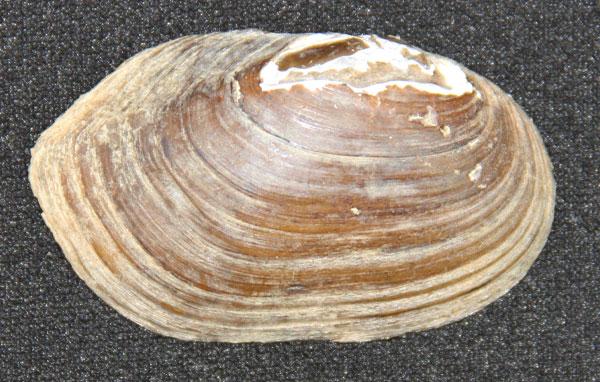
Villosa mussels (Coosa creekshell)
The Coosa creekshell is a species of freshwater mussel that are endemic to the Coosa River Drainage in Alabama, Georgia and Tennessee. Increased sedimentation and reduced aquatic connectivity for host fishes like sunfish and sculpins have caused population declines throughout their range.
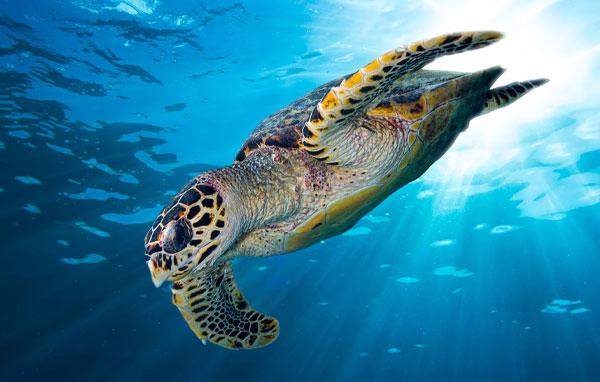
Sea turtles
There are seven different species of sea turtles, six of which are found in U.S. waters and are listed as threatened or endangered in a least a portion of their circumglobal range. These species include leatherback, loggerhead, Kemp’s ridley, olive ridley, green and hawksbill. For more than 100 million years, sea turtles have migrated long-distances over temperate and tropical oceans, spending most of their time at sea but returning to natal beaches to lay eggs.
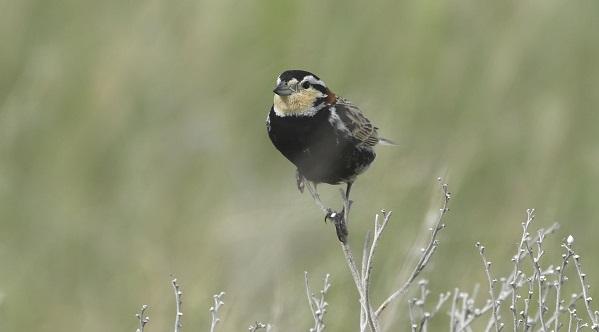
Chestnut-collared longspur
The chestnut-collared longspur is a striking songbird highly endemic to shortgrass prairies of North America known for its aerial displays when defending their territory. Named for the long claw on their hind toe, these ground nesting birds have been in decline due to loss of native prairie and pesticides that are thought to reduce hatching success.
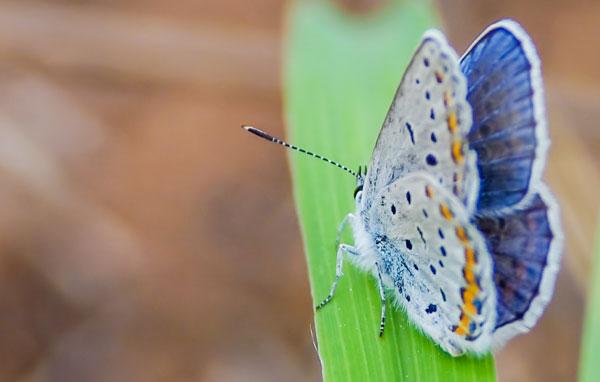
Karner blue butterfly
Karner blue butterflies measure only 1 inch wide, and are native to the Oakland Savannahs, stretching from New York to Minnesota. The species requires specialized habitats where wild blue lupine is abundant, the exclusive food plant for Karner caterpillars. Populations were in steep decline following habitat loss and modifications, which prompted their listing as an endangered species in 1992.
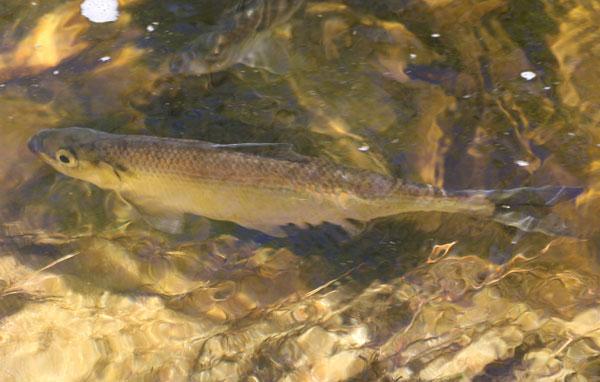
River herring
Alewife and blueback herring—collectively known as river herring—are diadromous fishes that spend most of their lives at sea but return to river and streams to spawn. Once abundant throughout the Atlantic seaboard, river herring populations have declined due to overfishing and habitat loss associated with the construction of dams. Recent conservation efforts have seen millions of river herring return to streams throughout New England, a promising sign not just for river herring, but also myriad other species that rely on them as an important food source.
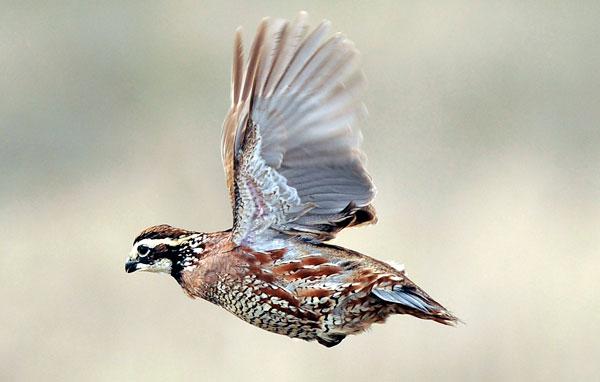
Northern bobwhite quail
One of the most economically important game birds, the northern bobwhite quail is named for the distinctive 'bob-white' mating call of males throughout the breeding season. Bobwhite quail prefer shrubby areas surrounding grasslands or agricultural fields and live in groups called "coveys" during the fall and winter.
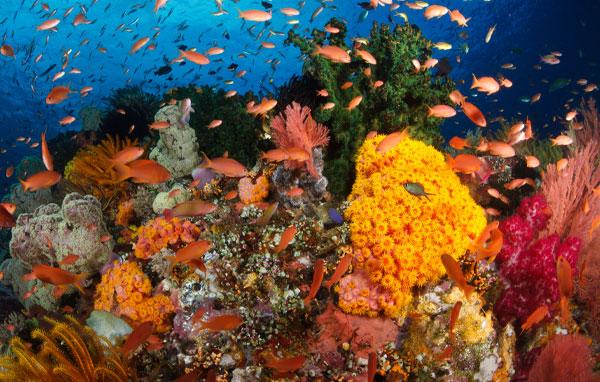
Corals
Found in shallow, tropical waters around the world, coral reefs are among the most iconic and diverse ecosystems on earth. Despite covering less than 1 percent of the ocean, 25 percent of marine species rely on coral reefs, which are made up of many different species of coral. While corals are threatened by pollution, overfishing, disease and increasing ocean temperature resulting in widespread mortality, local conservation efforts coupled with advancements in coral restoration show promise for conserving this important ecosystem.
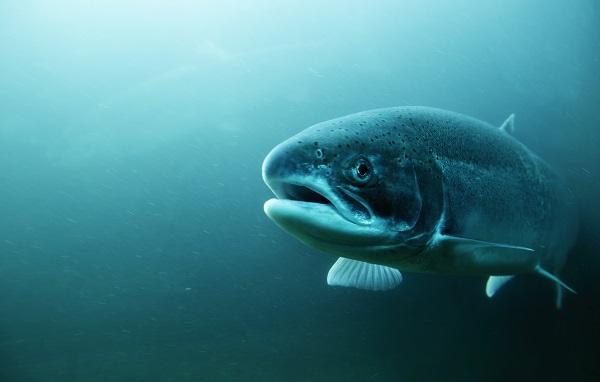
Steelhead trout
Steelhead trout are an anadromous species that live along the west coast of the United States. While all Steelhead trout return to freshwater to spawn, some stay in freshwater their whole lives and are referred to as rainbow trout. Steelhead trout are vulnerable to many stressors and threats including blocked access to spawning grounds and habitat degradation caused by dams and culverts.
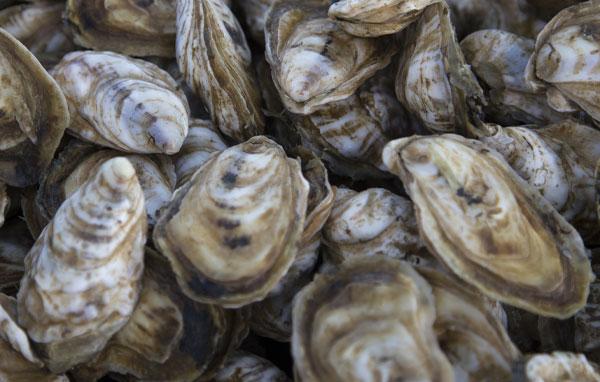
Eastern oyster
Eastern oysters have played a particularly prominent role in the culture, history, and economy of the Chesapeake Bay and other areas throughout the Gulf and Atlantic Coasts. Reefs serve as important habitat for a variety of aquatic species. However, overharvesting, disease and declines in estuarine and bottom habitats have ravaged native oyster populations. Eastern oysters now represent less than 2 percent of their peak historical populations.
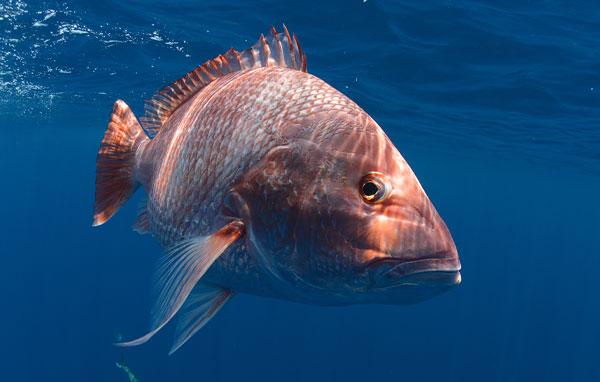
Red snapper
The red snapper is a long-lived reef fish typically found over deep reefs banks and rocky bottoms within the Gulf of Mexico and the South Atlantic United States. Red snapper are one of the most popular sport fishes in the Gulf of Mexico and support important recreational and commercial fisheries.
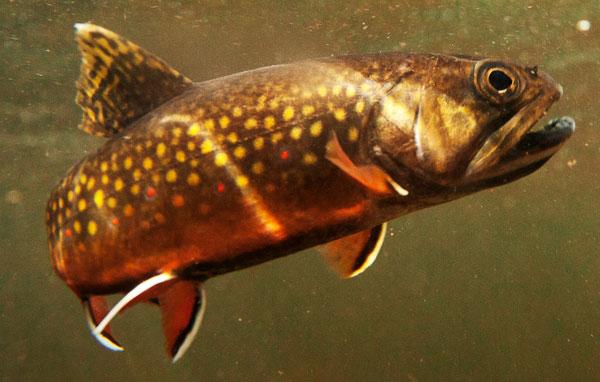
Eastern brook trout
The eastern brook trout is the only trout native to the eastern United States and inhabits coldwater rivers and lakes. Sensitive to even small declines in water quality and increases in sedimentation, brook trout can serve as excellent indicators of the health of a stream or river ecosystem.
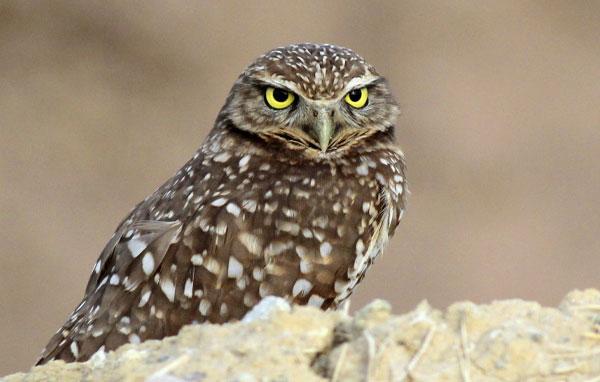
Burrowing owl
The burrowing owl is small with long legs, and found in open country throughout the Americas. Within the United States it is largely a western bird, with an isolated population in Florida. While the species is associated with burrowing animals, the Florida population digs its own burrows.
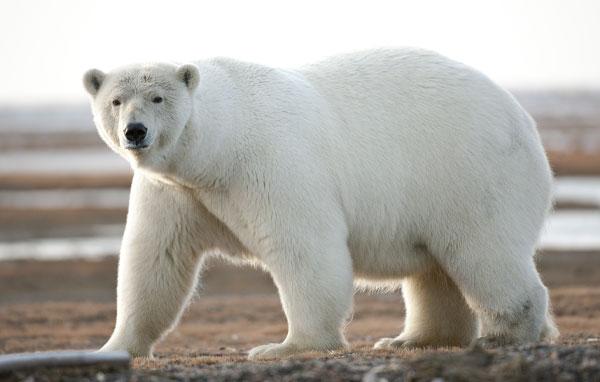
Polar bear
Polar bears are found throughout the Arctic, with 19 populations spread across Alaska, Canada, Greenland, Norway and Russia. Due to their reliance on sea ice, and thus vulnerability to the effects of climate change, these large marine mammals are listed as threatened under the Endangered Species Act. Today, there are fewer than 4,000 bears within the U.S. populations.
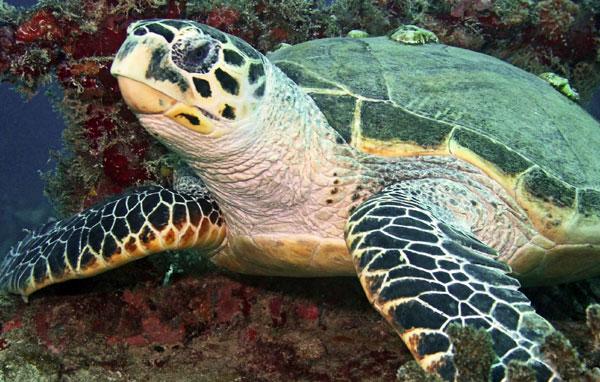
Northwest Atlantic loggerhead
Migrating far distances throughout the Atlantic Ocean from the Caribbean to Canada to the Mediterranean Sea, 90 percent of nesting activity for northwest Atlantic loggerhead sea turtles occur in Florida and the southeastern United States. The northwest Atlantic population has grown over the years showing positive signs of recovery, but loggerhead sea turtles continue to face threats from fishing and coastal development.
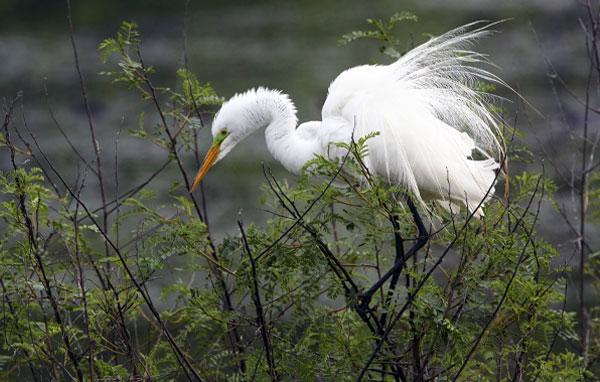
Great egret
The great egret is a common breeding species in many wetlands throughout the United States. However, this was not always the case. In the 19th and early 20th centuries, the bird was nearly eliminated from the country because of demand for its feathers as part of a hat trade. Following a ban on hunting the great egret in 1912, and the species has recovered to its former numbers.
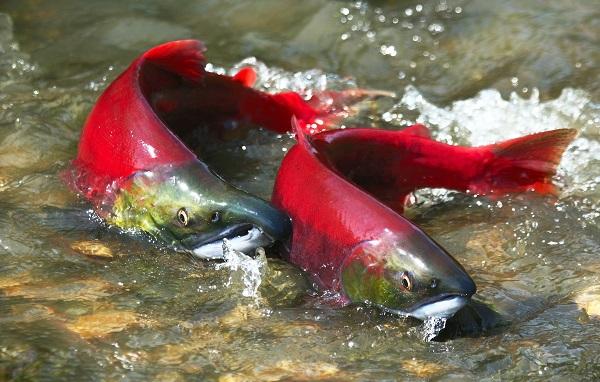
Sockeye salmon
Sockeye Salmon are normally anadromous – those that do not remain in freshwater their entire lives are sometimes known as “kokanee.” Sockeye suffer from degraded water quality, habitat loss, and changing ocean conditions, alongside climate change and urban development. Progress is being made for this species via dam removal and efforts to increase instream flow.
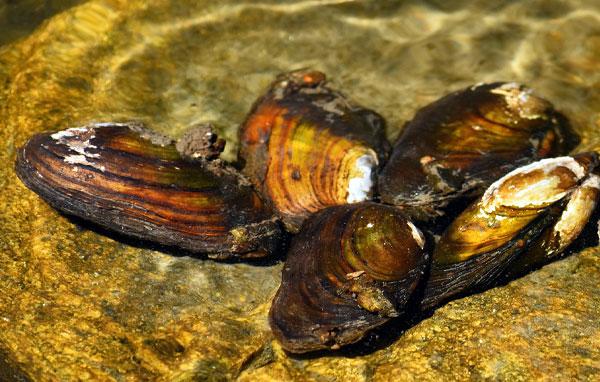
Freshwater mussels
Although mostly out of sight, the rivers of the United States are home to more than 300 freshwater mussel species – one of the highest counts in the world. They are beautiful and varied in terms of form, and important as indicators of stream health. Freshwater mussels not only depend on healthy waters, they contribute to that end by filtering vast amounts of water. Unfortunately, these species are at greater risk of extinction than any other group of its size in the nation.
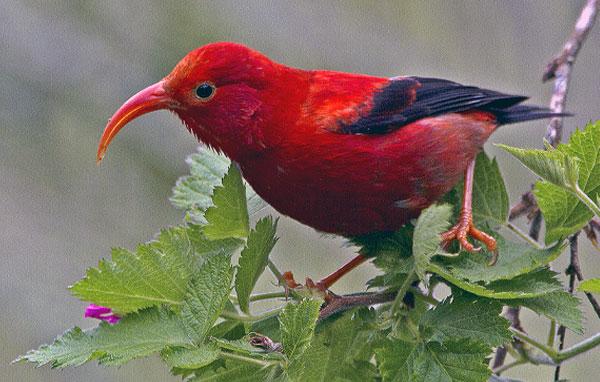
Hawaiian forest birds
Due to its geographic isolation, Hawaii has unique fauna and flora that are particularly vulnerable to changes in their environment. In fact, Hawaii is considered the species extinction capital of the United States. This especially true for endemic birds; 98 of 142 known endemic bird species having gone extinct since human arrival to Hawaii. Currently, 33 of Hawaii's remaining 44 endemic birds are listed under the Endangered Species Act. Eleven of those have not been seen for decades and are likely extinct.

Eastern hellbender
The eastern hellbender is a large, fully-aquatic salamander that breathes entirely through their skin making clean, oxygen-rich water critical in sustaining populations. Increased nutrient runoff and sediment desposition has decreased habitat quality for hellbenders leading to widespread population declines.
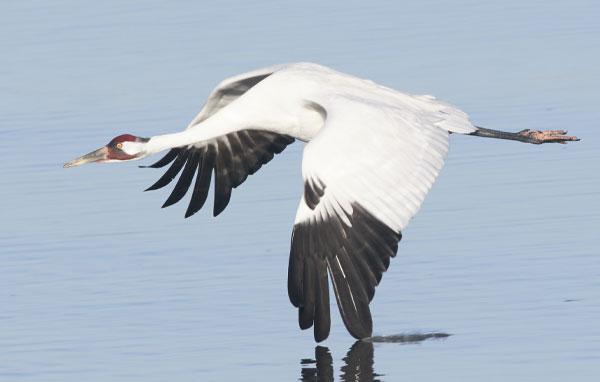
Whooping crane
The whooping crane is the tallest and one of the most threatened birds in North America. The only wild population winters along the Texas coast and migrates up to 2,500 miles to breed in or near Wood Buffalo National Park, Canada
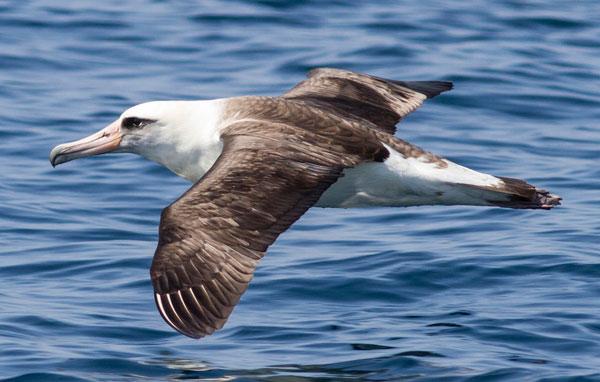
Pacific seabirds
Seabirds are a diverse group of species that disperse over vast ocean distances to seek food, often travelling far from breeding colonies on oceanic islands. They are able to live for decades and take three to eight years before starting to breed, after which they produce only 1 to 2 eggs every other year or so. Seabirds are impacted by their interaction with humans both on islands and in the ocean, which has driven many species to the brink of extinction.
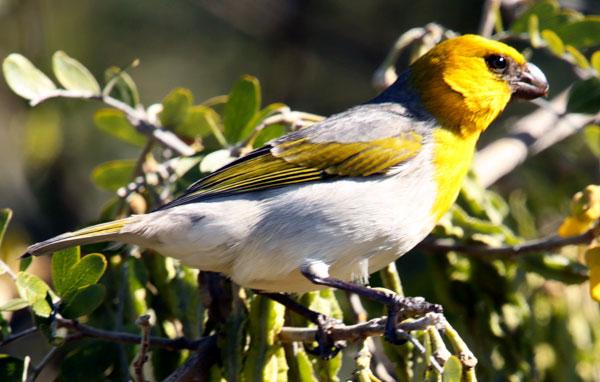
Palila
The palila is a unique finch-billed Hawaiian honeycreeper currently restricted to a narrow range of dry-forest forest on the volcano of Mauna Kea on Hawaii’s big Island. Palila are ecologically dependent on māmane, an endemic dry-forest tree that produces seed pods which are the primary food source for this species.
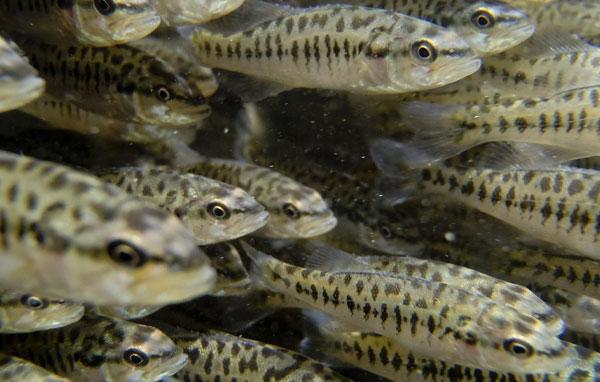
Guadalupe bass
The Guadalupe bass is the state fish of Texas - the only place on earth where the species is found. The main threats to the species are reduced stream flow and hybridization with non-native smallmouth bass.
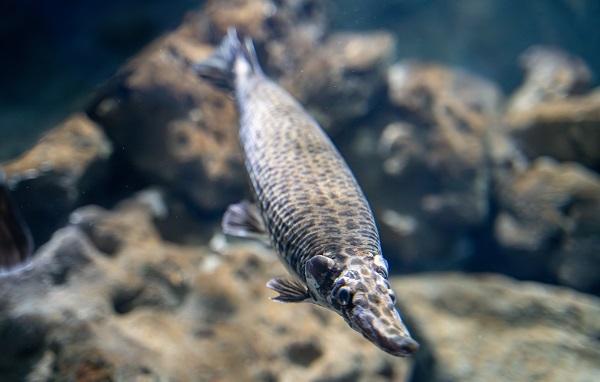
Alligator Gar
Alligator gar—one of seven species of gar—are a long-lived species with evolutionary roots going back 180 million years. The alligator gar is the largest gar species alive today, averaging 6.5 feet in length and weighing up to 350 pounds. Interlocking, diamond-shaped scales act as chainmail to protect the alligator gar from predator attacks. Alligator gar range from southwestern Ohio and southern Illinois to the Mississippi River drainage basin. Their range continues south to the Gulf of Mexico.